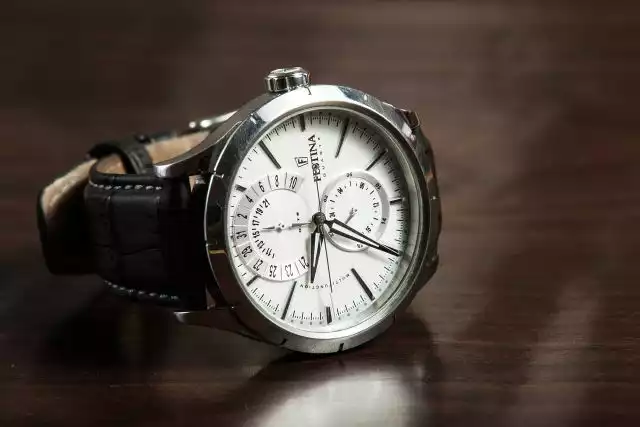Overcoming Anxious Attachment Style For More Secure Bonds

She has a particular passion for the mental health and well-being space, creating actionable content that can empower people to make confident decisions for their personal wellness.
If you continually are afraid that a relationship you like may finish, you could have an anxious attachment style. Possibly you’re worried that you aren’t adequate for someone or that they’ll find somebody better. Perhaps you fear that they would certainly like to be alone.
Disorganized add-on design: This style is a mix of distressed and avoidant attributes. A person with this accessory design may seek intimate connections and then take out, leading to an uncertain pattern of behaviors within partnerships.
This frame of mind can be detrimental to partnerships of all kinds. It can cause unneeded dispute and lead to stretched partnerships. It’s important to identify the signs and symptoms of an anxious add-on design and what to do when you or a loved one feels this way.
Avoidant add-on design: This unconfident accessory style overstates freedom in a partnership, which might protect against someone from obtaining too near their companion. This can cause problems with intimacy and vulnerability. A person with an avoidant add-on design may act this way to “protect” themselves from dissatisfaction.
When one person is worried the other will certainly leave, an anxious attachment design is a behavioral pattern that establishes in a partnership. An individual with this accessory design commonly desires a close relationship, but substantially is afraid denial or abandonment. This may trigger them to overemphasize things they see as dangers to their partnerships.
An anxious add-on style is characterized by yearning emotional closeness however stressing that a person could not return the sensation. It commonly stems from very early childhood experiences with caregivers, such as the following:
If you discover a potentially problematic connection, consider the circumstances of the relationship, including exactly how old you were and why you may have felt abandoned. Understanding where these automated thoughts and habits originate from can aid you logically combat them.
Your attachment design might be connected to a previous trauma you have yet to work via. You might get in touch with a psychological health and wellness therapist or psychoanalyst in your location that specializes in connections.
Having an anxious attachment style can stress your relationships and negatively impact your psychological health. People who are anxiously connected could nitpick whatever their companion does or try to evaluate their companion’s loyalty. This might bring about their companion sensation skepticism in the partnership.
Your companion can additionally establish some borders to help with your accessory design. Setting these expectations in breakthrough may help relax your nerves regarding being apart from them.
Perhaps you don’t have a distressed add-on design, however your buddy, coworker, or companion does. It’s crucial to be recognizing and person if this is the instance. It’s also important to reveal nervous partners support and safety and security in a way that resonates with them.
Really feeling envious when your companion welcomes a colleague outside of job may be an indication of anxious accessory. However, if you really feel deserted because your partner burns the midnight oil and is constantly traveling, that feeling might be rooted in a real relationship trouble.
Admitting that you have a nervous accessory design might not be very easy, however it’s the first step toward healing. It is essential to bear in mind that if you do show signs of this behavioral pattern, it’s not your mistake.
Nervous staff members might continuously look for approval from their supervisor or accept outside tasks. You may feel envious if you see them with another close friend instead of you if you have a nervous add-on to a pal.
Learning exactly how to recover an anxious add-on design takes job, but it is possible. Working to transform your attachment patterns can cause deeper partnerships. It can also aid you end up being a better good friend and enchanting partner.
Setting healthy limits in a partnership is a fantastic method for you and your partner to navigate contrasting attachment designs. These can be psychological limits, physical limits, or a mix of the two.
These activities and sensations can create stress in the connection. This might also be the reason that a partner might choose to leave, materializing the underlying fears of the anxiously connected individual. The more that relationships end, the more a fear of abandonment becomes enhanced.
These adverse experiences or irregular characteristics can make you feel like changability and loss are a typical component of connections. This might cause you to look for even more attention or experience more insecurities.
Efficient interaction in a relationship can do marvels for your attachment style. If you seem like your romantic relationships have been strained because of your distressed behaviors, attempt being open with your companion.
When you may appear jealous or clingy, recognize that there might be times. Explain where you believe those feelings may come from, particularly if you can pinpoint particular relationships where you weren’t dealt with rather.
These feelings are real, and you do not require to really feel embarrassed. If you feel shame or shame due to the fact that of distressed actions, bear in mind to practice self-love.
Connecting with others that recognize your attitude and are likewise looking for modification can assist normalize your sensations. These social ties might make you feel less alone while providing concepts for changing your strategy to specific connections.
Seek assistance from others who have had similar experiences or styles if you’re having a hard time to comprehend your accessory design or manage its signs and symptoms. Produce a social objective of participating in an anxious add-on support system. You could discover a team in your neighborhood or online.
Discovering how to get used to a person that exhibits these habits can be an excellent means to repair a partnership that might feel unsteady. If your charming partner struggles with nervous accessory, here are a few methods you can assist:
She has a specific interest for the mental health and health area, developing workable material that can encourage people to make certain decisions for their personal health. Her job has actually been published in The New York Times, Insider, and extra.
Any individual can experience a distressed attachment design, and it’s feasible to take control of it. Preventing the problem can substantially affect your expert and personal growth. Taking a proactive technique to self-awareness and self-improvement, nonetheless, can result in better connections and a greater sense of security.
If you consistently are afraid that a connection you like might finish, you could have an anxious accessory design. A distressed add-on style is a behavior pattern that develops in a partnership when one individual is terrified the other will leave. An individual with this add-on design generally wants a close relationship, yet substantially fears being rejected or abandonment. Avoidant attachment style: This troubled accessory style exaggerates freedom in a partnership, which might protect against someone from obtaining also close to their partner. Having a distressed add-on design can strain your partnerships and negatively impact your psychological health and wellness.
1 accessory design2 anxious add-on design
« Smok’d Pubs: Where Smoked Meats, Rare Whiskies, and Live Entertainment Create an Unforgettable ExperienceLivingston Designer Outlet Welcomes CafeBar Nineteen62 »
